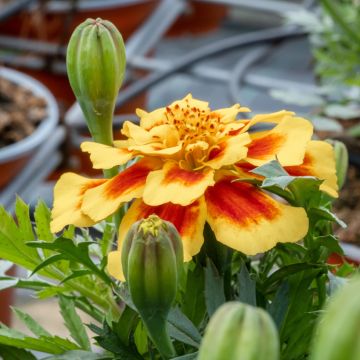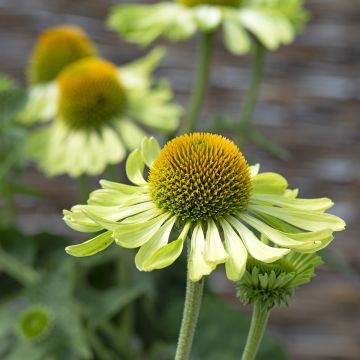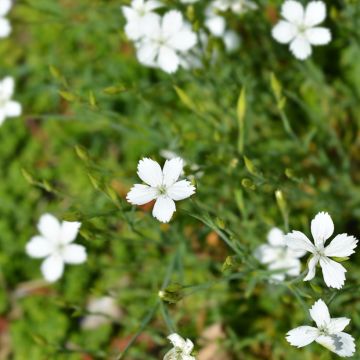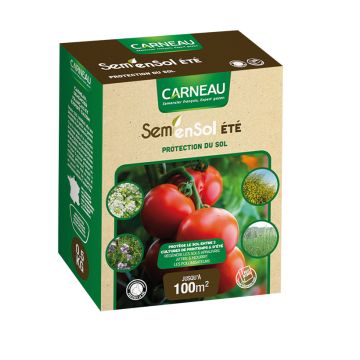

French marigold Legion of Honour seeds - Tagetes patula
French marigold Legion of Honour seeds - Tagetes patula
Tagetes patula Légion d'Honneur
French marigold
This item cannot be shipped to the selected country
Delivery charge from €5.90
More information
Schedule delivery date,
and select date in basket
This plant carries a 6 months recovery warranty
More information
We guarantee the quality of our plants for a full growing cycle, and will replace at our expense any plant that fails to recover under normal climatic and planting conditions.
From €5.90 for pickup delivery and €6.90 for home delivery
Express home delivery from €8.90.
Does this plant fit my garden?
Set up your Plantfit profile →
Description
The French Marigold 'Legion of Honour', known by its Latin name Tagetes patula, is a dwarf variety with single flowers in bicolour shades of orange-red edged with bright yellow. This well-branched, small annual plant with a neat habit offers abundant flowering throughout the summer. Its rapid growth and easy cultivation make it an ideal choice for borders and containers. Sow it under cover at the end of winter or in spring.
Tagetes patula is an herbaceous annual plant from the aster family, originating from tropical regions in both Americas, from Mexico to Bolivia. It quickly forms a small, bushy and branched clump, with a neat habit, reaching 20 cm in all directions, covered in dark green, highly cut foliage that is strongly aromatic, although its smell may not be pleasant. The flowering period extends from June to September, and faded flowers should be regularly removed. 'Legion of Honour' produces magnificent, single heads measuring 6 cm in diameter. The ligules are quite wide and surround a central yellow disc. This plant readily self-seeds in the garden, but not always true to the mother variety.
French Marigolds are easy to sow and grow in well-drained soil, in full sun or partial shade. They brighten up summer beds with their generous flowering and intense colours, ideal to be softened by grey foliage like that of Artemisias and Stachys. Small golden grasses also blend in perfectly. To create contrasts, pair them with the blue flowers of perennial flaxes, salvias, or Love-in-a-Mist. In the vegetable garden, mix Tagetes with Dahlias, Agastaches, and Nasturtiums. Their edible flowers add a decorative touch to salads, cakes, and cocktails.
The scent of French Marigold foliage, and the substances secreted by their roots, repel certain insects harmful to crops, which is why these plants are often placed among the vegetables in the kitchen garden.
Report an error about the product description
Flowering
Foliage
Plant habit
Botanical data
Tagetes
patula
Légion d'Honneur
Asteraceae
French marigold
Tagetes erecta
Cultivar or hybrid
Other Tagetes seeds
Planting and care
Sowing:
Sow from February to April.
Sow Legion of Honour on the surface of moist and well-drained seed compost. Cover the seeds with a very thin layer of vermiculite or compost. Place the young plants in a propagator or enclose them in a polythene bag at a constant temperature of 20 to 25° until germination, which usually takes 7 to 21 days. Do not deprive them of light, as this promotes germination.
When the young plants are sufficiently developed to be handled, transplant them into a seed tray or 8 cm pots. Acclimatise them to cooler conditions for 10 to 15 days before planting them outside at a distance of 15 - 20 cm and as soon as frost is no longer a concern.
Culture:
These fast-growing plants thrive in the sun and warm conditions. Plant them in fertile, well-drained, light soil. Avoid excessive watering in summer, as this promotes the onset of fungal disease and root rot. Regularly remove faded flowers to extend flowering. Protect plants from slugs and snails, which are fond of them.
Sowing period
Intended location
This item has not been reviewed yet - be the first to leave a review about it.
Flower seeds
Haven't found what you were looking for?
Hardiness is the lowest winter temperature a plant can endure without suffering serious damage or even dying. However, hardiness is affected by location (a sheltered area, such as a patio), protection (winter cover) and soil type (hardiness is improved by well-drained soil).

Photo Sharing Terms & Conditions
In order to encourage gardeners to interact and share their experiences, Promesse de fleurs offers various media enabling content to be uploaded onto its Site - in particular via the ‘Photo sharing’ module.
The User agrees to refrain from:
- Posting any content that is illegal, prejudicial, insulting, racist, inciteful to hatred, revisionist, contrary to public decency, that infringes on privacy or on the privacy rights of third parties, in particular the publicity rights of persons and goods, intellectual property rights, or the right to privacy.
- Submitting content on behalf of a third party;
- Impersonate the identity of a third party and/or publish any personal information about a third party;
In general, the User undertakes to refrain from any unethical behaviour.
All Content (in particular text, comments, files, images, photos, videos, creative works, etc.), which may be subject to property or intellectual property rights, image or other private rights, shall remain the property of the User, subject to the limited rights granted by the terms of the licence granted by Promesse de fleurs as stated below. Users are at liberty to publish or not to publish such Content on the Site, notably via the ‘Photo Sharing’ facility, and accept that this Content shall be made public and freely accessible, notably on the Internet.
Users further acknowledge, undertake to have ,and guarantee that they hold all necessary rights and permissions to publish such material on the Site, in particular with regard to the legislation in force pertaining to any privacy, property, intellectual property, image, or contractual rights, or rights of any other nature. By publishing such Content on the Site, Users acknowledge accepting full liability as publishers of the Content within the meaning of the law, and grant Promesse de fleurs, free of charge, an inclusive, worldwide licence for the said Content for the entire duration of its publication, including all reproduction, representation, up/downloading, displaying, performing, transmission, and storage rights.
Users also grant permission for their name to be linked to the Content and accept that this link may not always be made available.
By engaging in posting material, Users consent to their Content becoming automatically accessible on the Internet, in particular on other sites and/or blogs and/or web pages of the Promesse de fleurs site, including in particular social pages and the Promesse de fleurs catalogue.
Users may secure the removal of entrusted content free of charge by issuing a simple request via our contact form.
The flowering period indicated on our website applies to countries and regions located in USDA zone 8 (France, the United Kingdom, Ireland, the Netherlands, etc.)
It will vary according to where you live:
- In zones 9 to 10 (Italy, Spain, Greece, etc.), flowering will occur about 2 to 4 weeks earlier.
- In zones 6 to 7 (Germany, Poland, Slovenia, and lower mountainous regions), flowering will be delayed by 2 to 3 weeks.
- In zone 5 (Central Europe, Scandinavia), blooming will be delayed by 3 to 5 weeks.
In temperate climates, pruning of spring-flowering shrubs (forsythia, spireas, etc.) should be done just after flowering.
Pruning of summer-flowering shrubs (Indian Lilac, Perovskia, etc.) can be done in winter or spring.
In cold regions as well as with frost-sensitive plants, avoid pruning too early when severe frosts may still occur.
The planting period indicated on our website applies to countries and regions located in USDA zone 8 (France, United Kingdom, Ireland, Netherlands).
It will vary according to where you live:
- In Mediterranean zones (Marseille, Madrid, Milan, etc.), autumn and winter are the best planting periods.
- In continental zones (Strasbourg, Munich, Vienna, etc.), delay planting by 2 to 3 weeks in spring and bring it forward by 2 to 4 weeks in autumn.
- In mountainous regions (the Alps, Pyrenees, Carpathians, etc.), it is best to plant in late spring (May-June) or late summer (August-September).
The harvesting period indicated on our website applies to countries and regions in USDA zone 8 (France, England, Ireland, the Netherlands).
In colder areas (Scandinavia, Poland, Austria...) fruit and vegetable harvests are likely to be delayed by 3-4 weeks.
In warmer areas (Italy, Spain, Greece, etc.), harvesting will probably take place earlier, depending on weather conditions.
The sowing periods indicated on our website apply to countries and regions within USDA Zone 8 (France, UK, Ireland, Netherlands).
In colder areas (Scandinavia, Poland, Austria...), delay any outdoor sowing by 3-4 weeks, or sow under glass.
In warmer climes (Italy, Spain, Greece, etc.), bring outdoor sowing forward by a few weeks.





















































